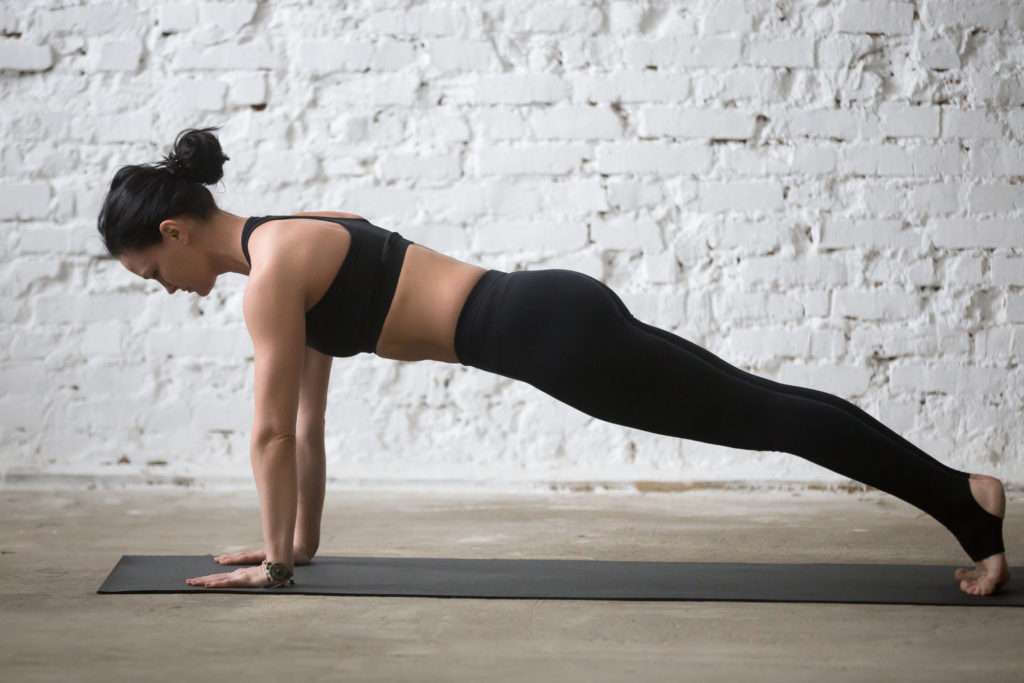PLANK POSE
Dandasana
(don-DAHS-anna)
danda = staff (refers to the spine, the central “staff” or support of the body)
This pose is also referred to as Kumbhakasana
(koom-bahk-AHS-uh-nuh)
kumbha=pot (a traditional image of the human torso as a container for the breath with two openings at the throat and base of the pelvis). In reference to this posture, kumbhaka means “inhaling, retaining and exhaling (breath retention) into the container.

Steps:
- Starting in Downward Facing Dog, inhale and draw the torso forward until the arms are perpendicular to the floor and the shoulders are over the wrists.
- Press your shoulder blades against your back and spread the shoulder. Also, spread your collarbones away from the sternum.
- Press your front thighs up toward the ceiling, but resist your tailbone dropping towards the floor as you lengthen it toward the heels. Lift the base of the skull stretching through the back of the neck and look straight down at the floor, keeping the eyes soft.
Modifications and Props:
If you are having a hard time allowing your shoulder blades to rest down the back, you can go to Adho Mukha Svanasana with the crown of the head resting on the wall. As you press the crown of your head into the wall, let the shoulders relax and pull away from the ears.
Variations:
If you want a more dynamic pose, lift one leg at a time, dorsi flexing the foot and press out thought the heel. Breathe 8-10 breaths and change legs.
Benefits:
Strengthens the arms and wrists and spine
Tones the abdominal muscles
Contraindications:
Carpal tunnel syndrome
